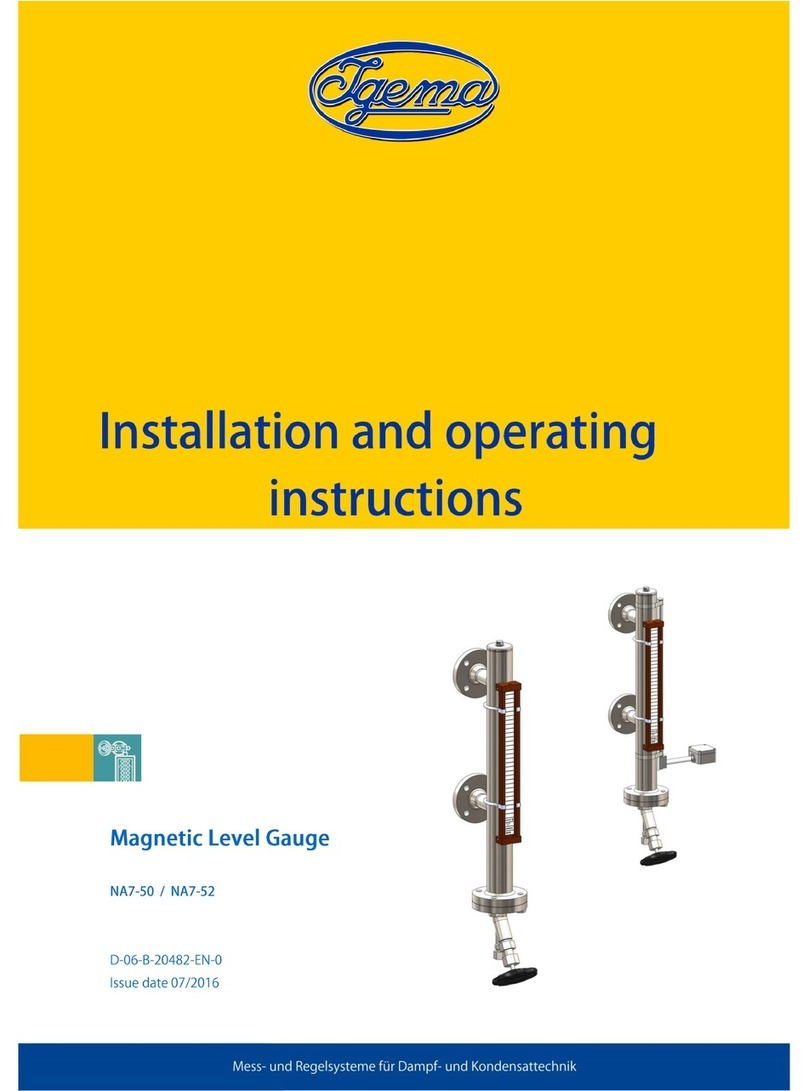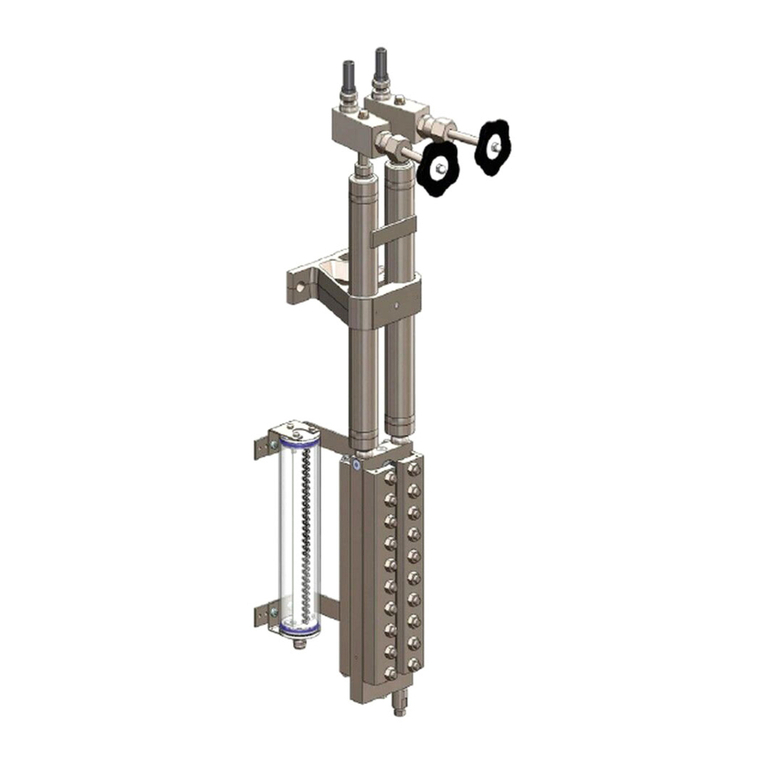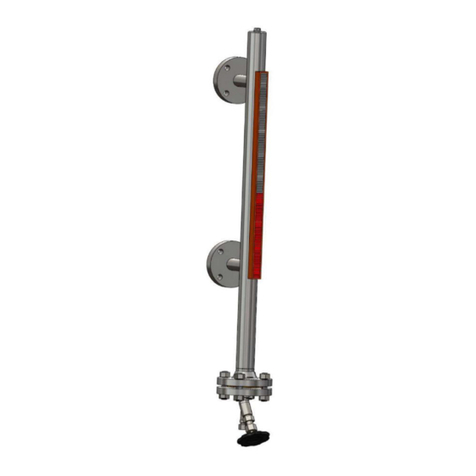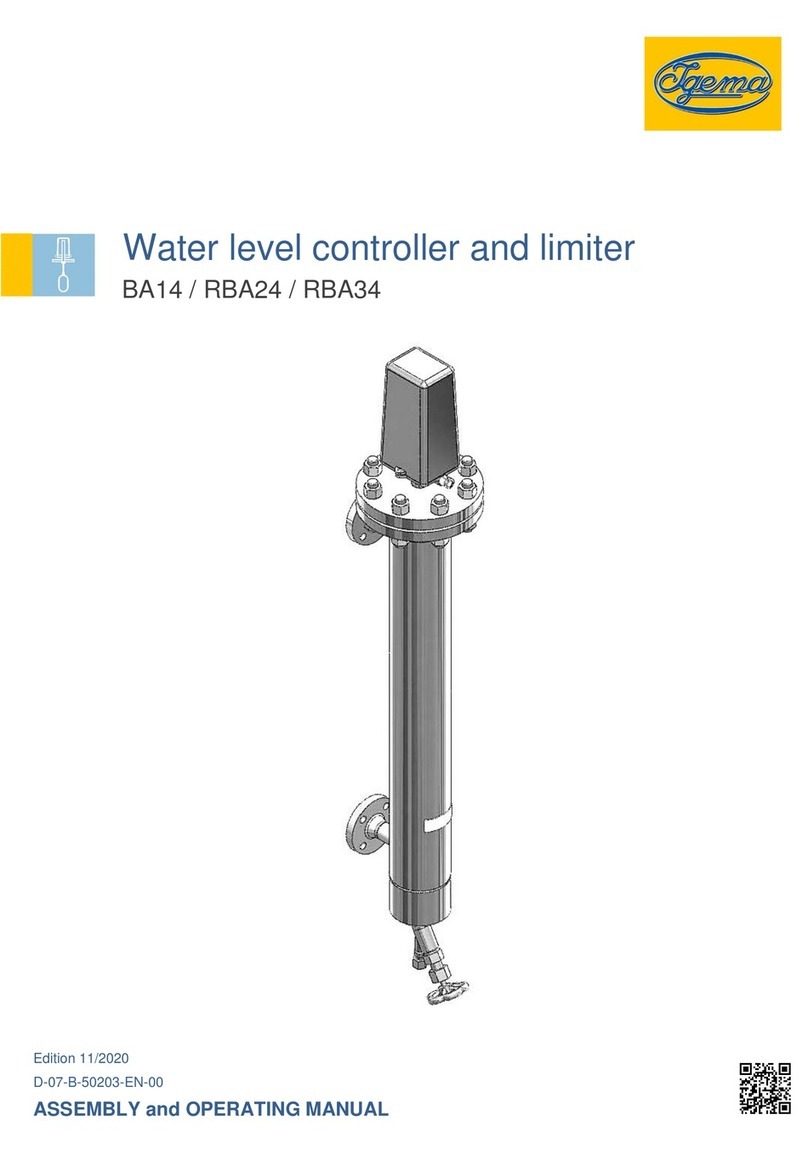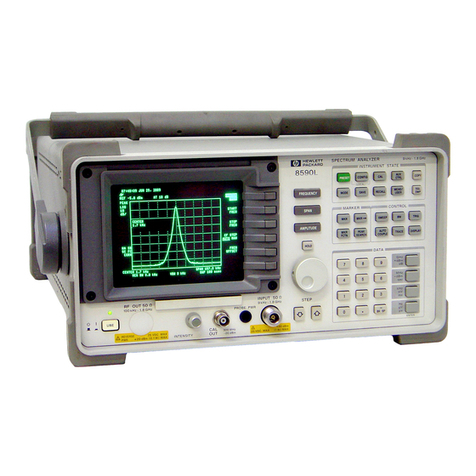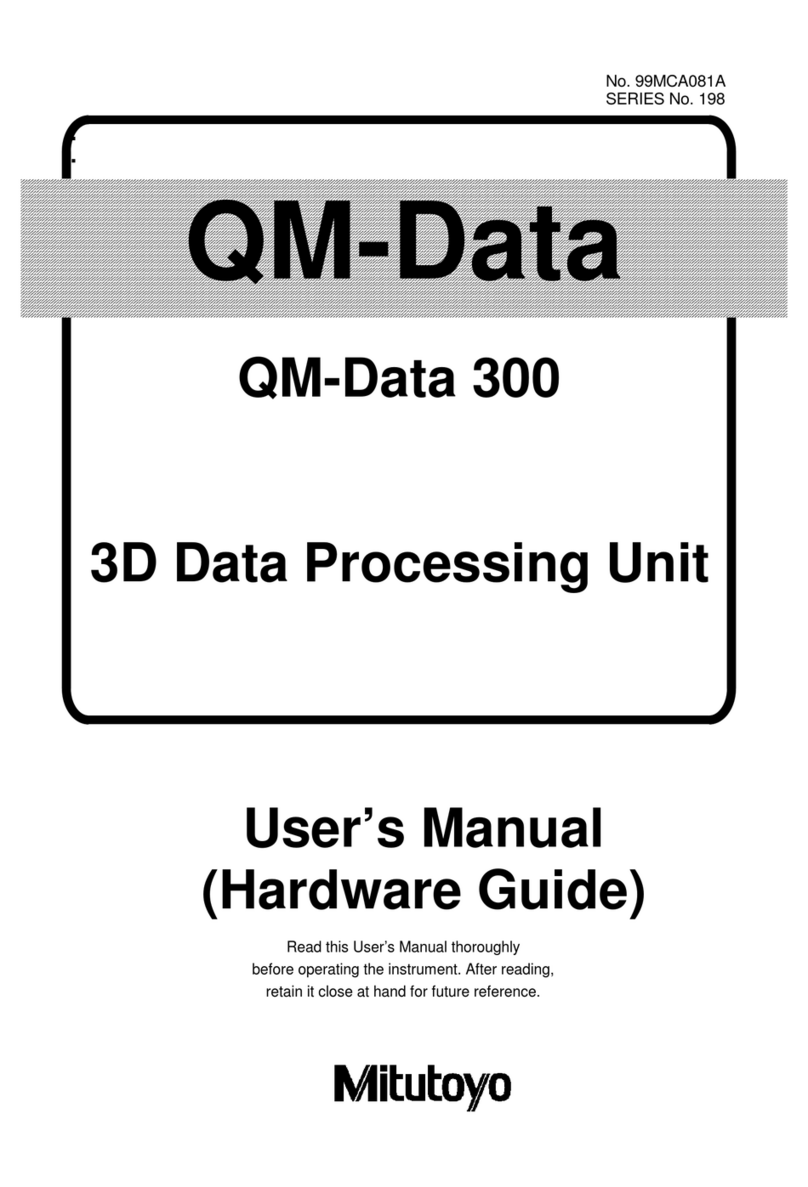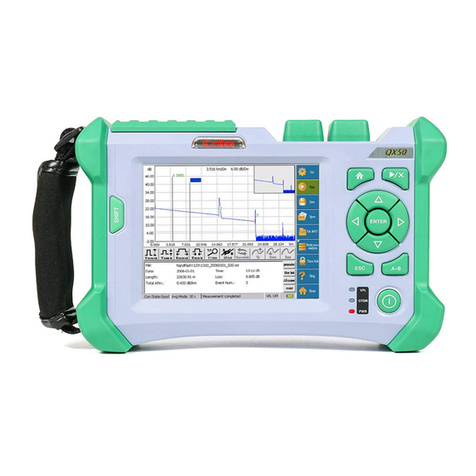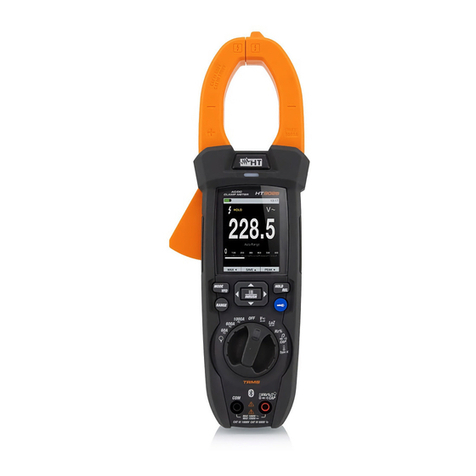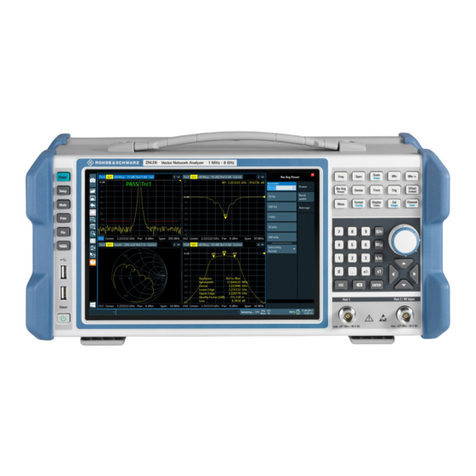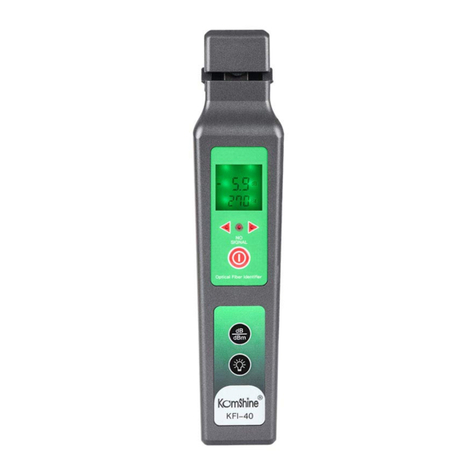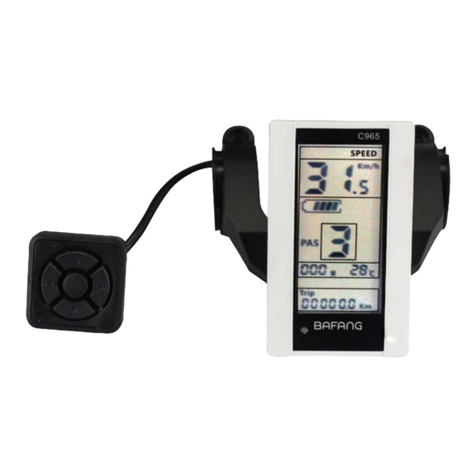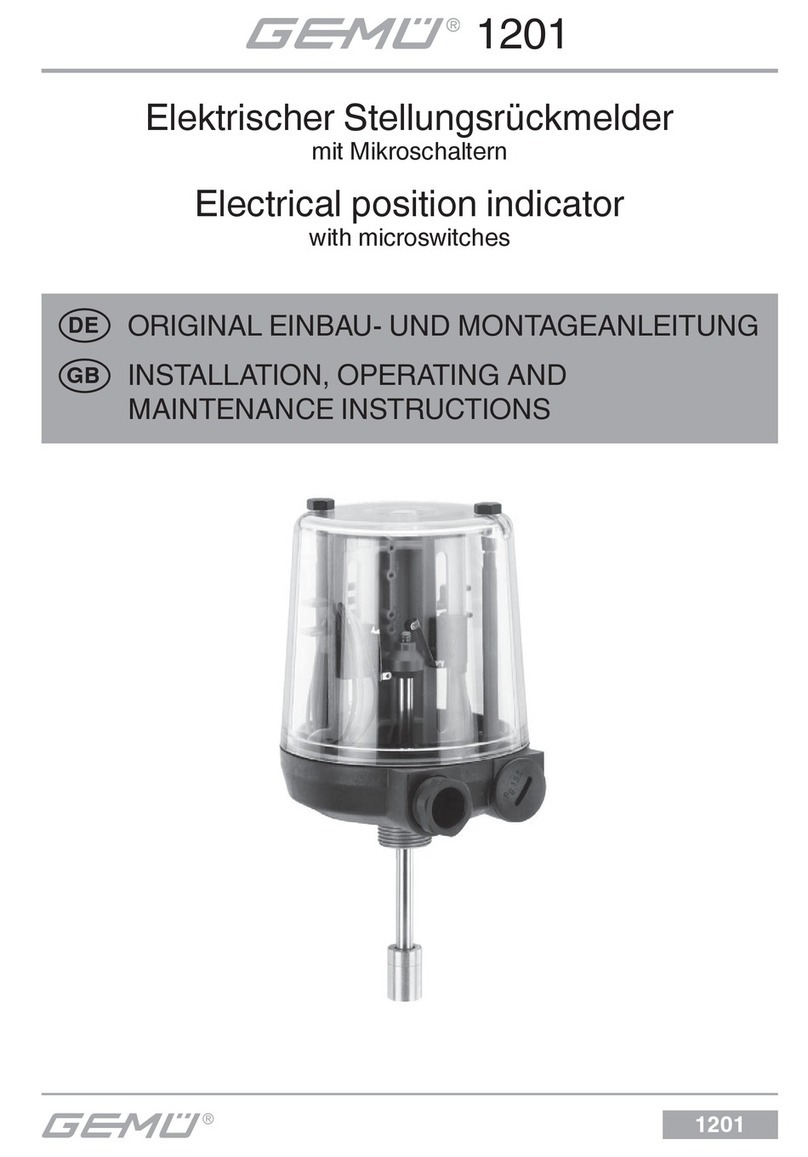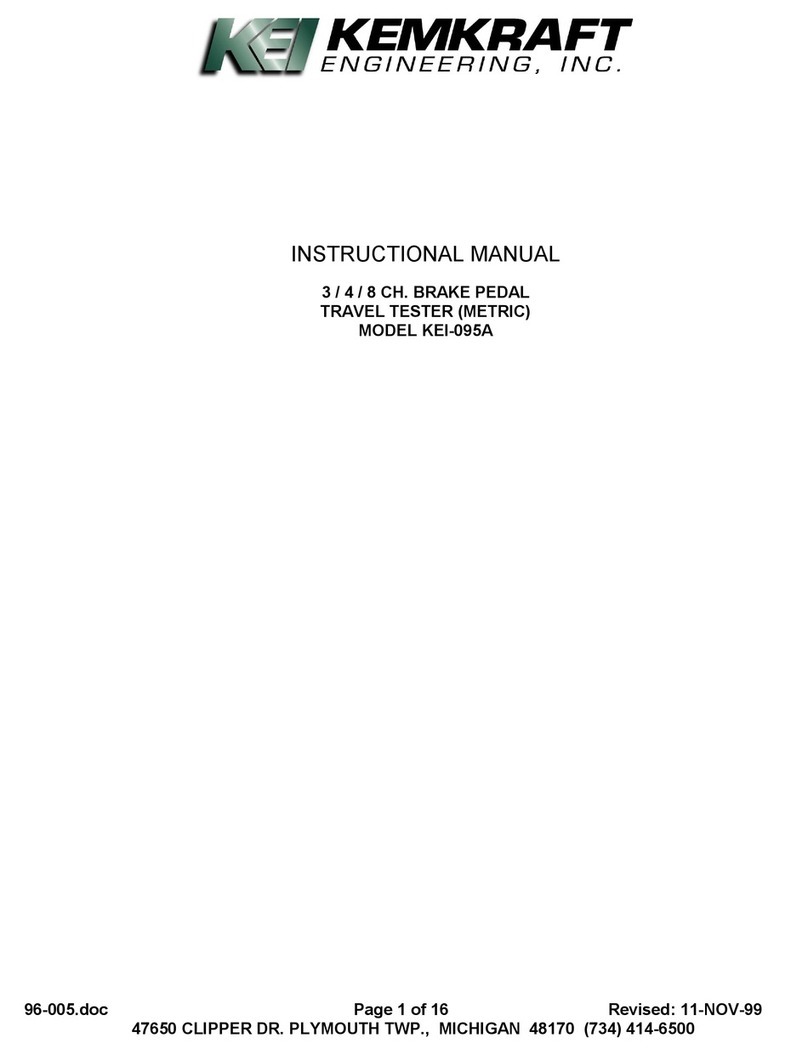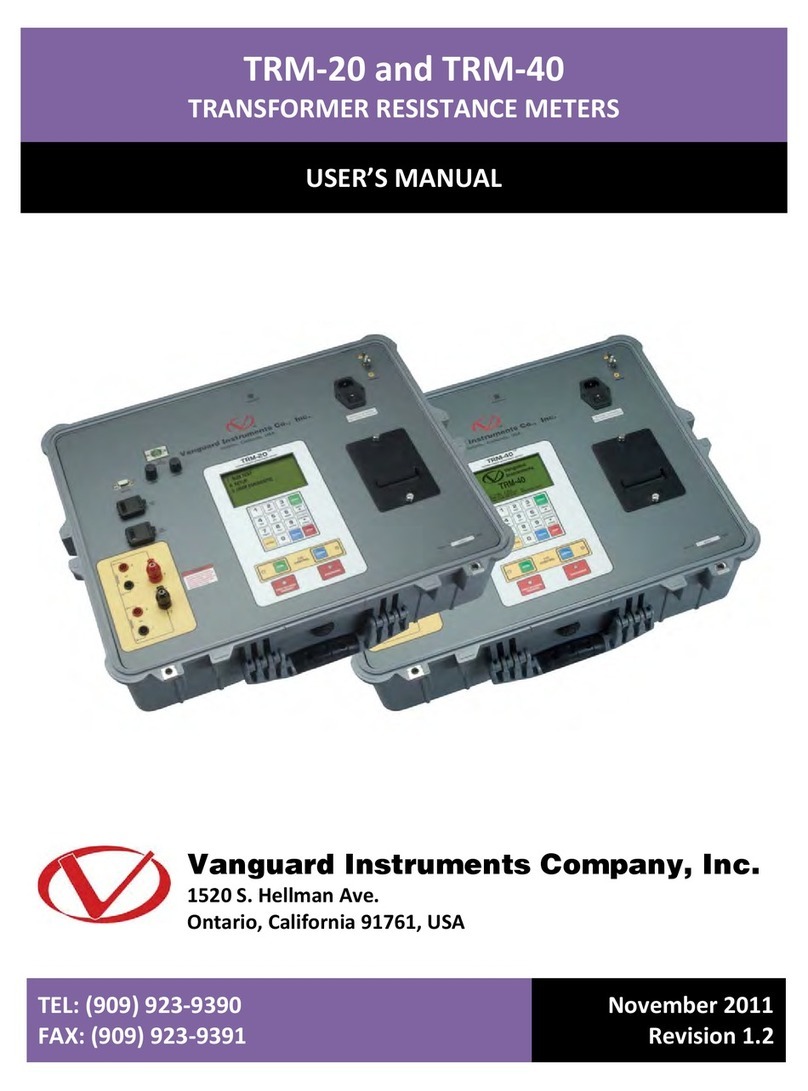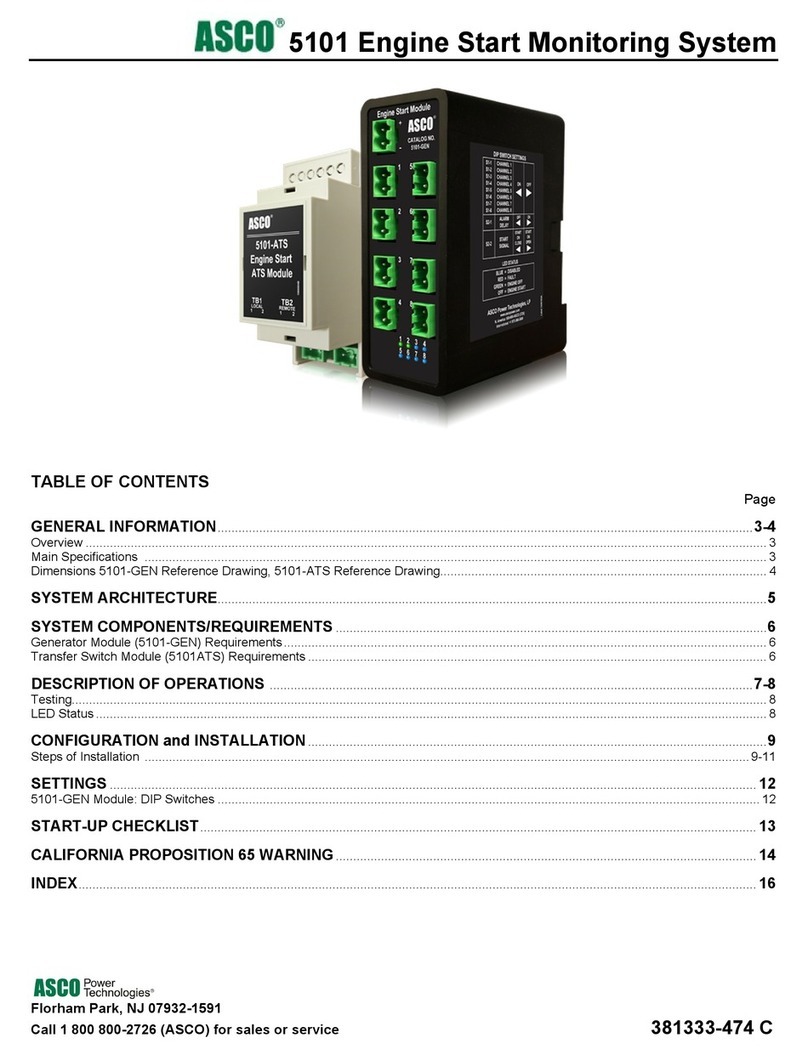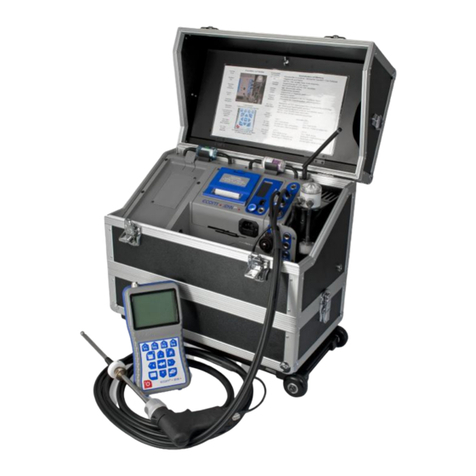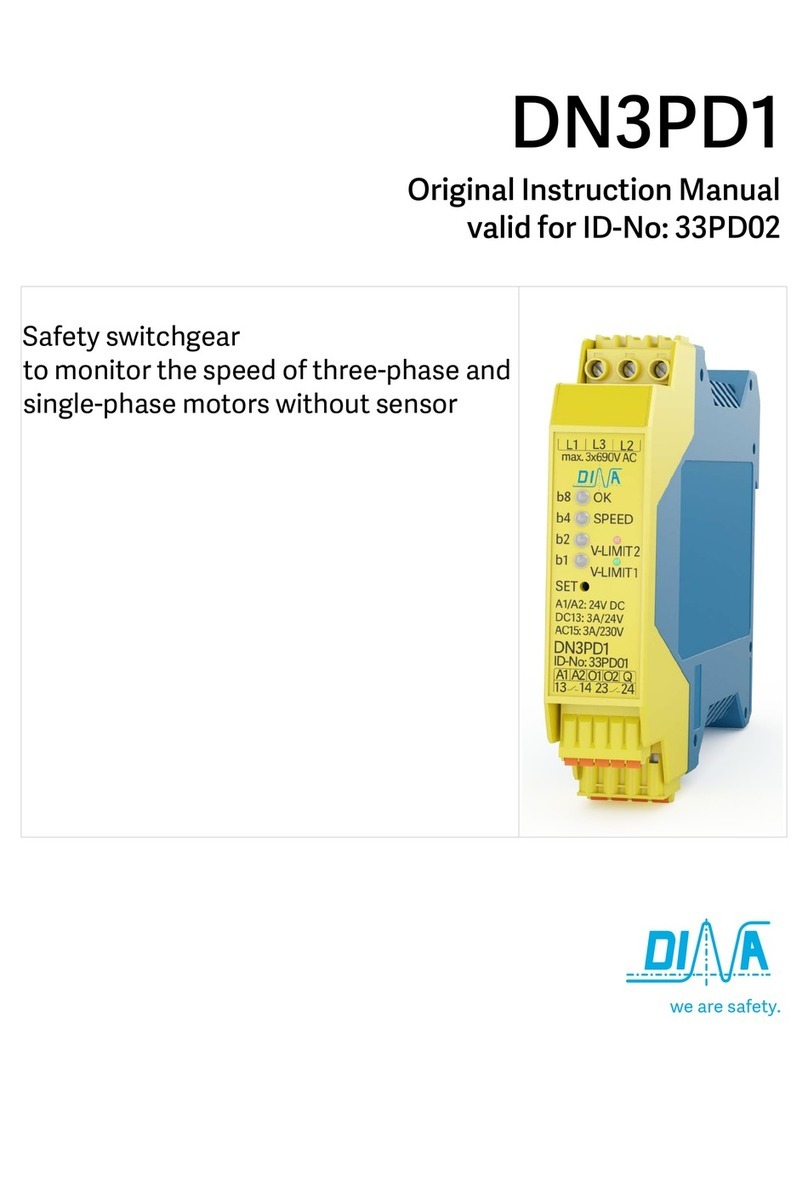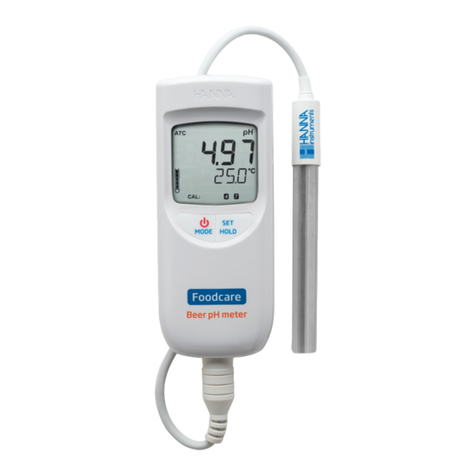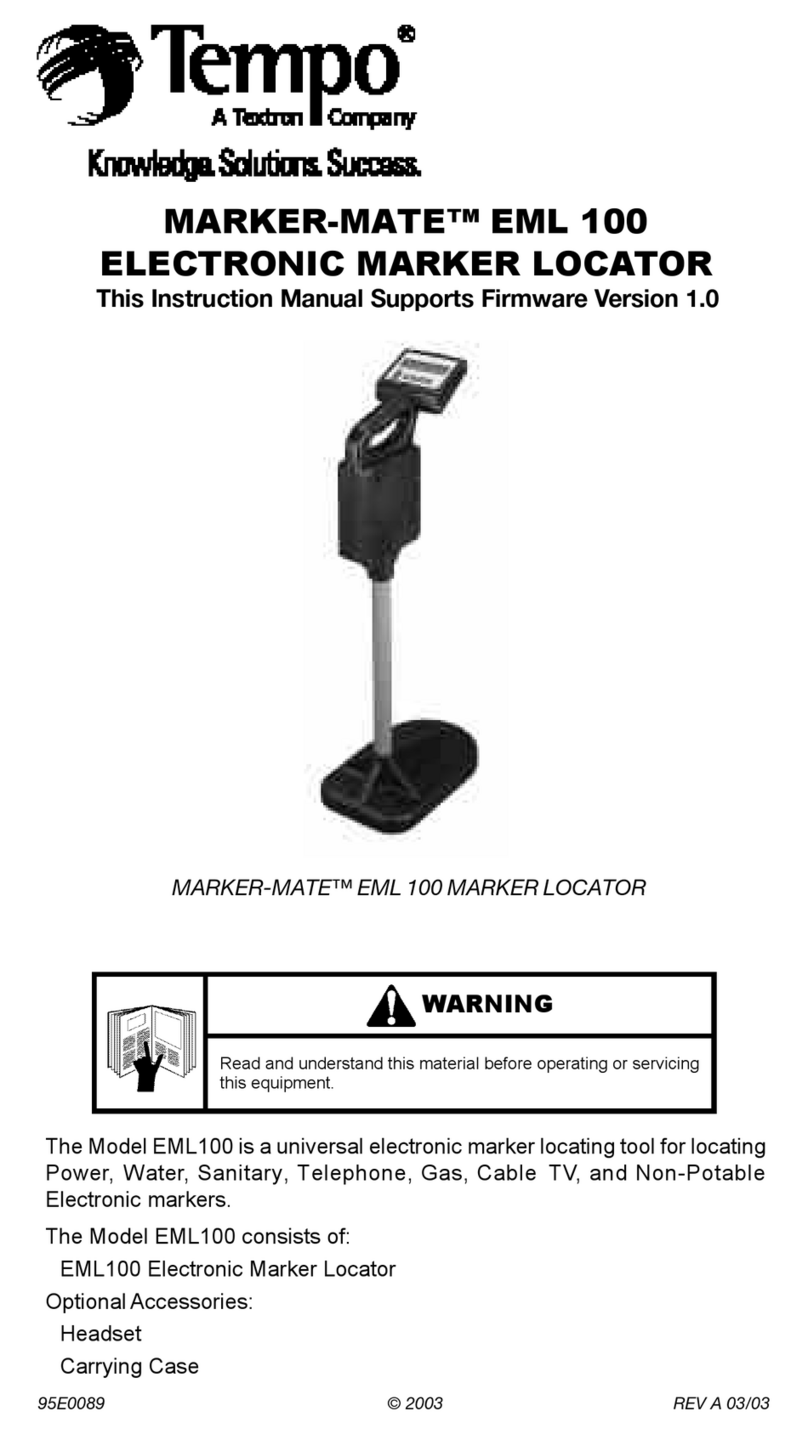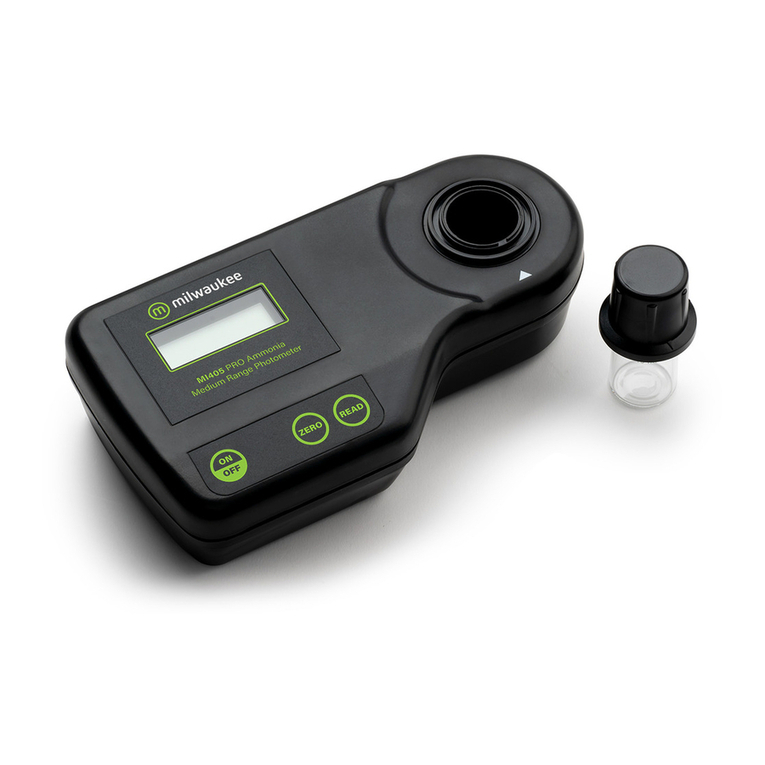Igema TG32 User instructions

TG32 / TG120
Transparent Level Gauge
Edition 11/2020
D-03-B-50371-EN-01
ASSEMBLY AND OPERATING MANUAL

2
Product philosophy
Thank you for placing your trust in IGEMA and deciding in favour of one of our
high-quality products.
For more than 100 years, measuring and control systems have been developed,
produced and sold worldwide under the IGEMA brand name.
“Steam is our passion” and we offer you the entire programme for the safe and
economic operation of your plants, especially in the steam and condensate sector.
Please read the installation and operating instructions carefully to ensure a safe and
reliable operation.
In addition to the information on installation and operation, you will also find important
information on maintenance, care, safety and value retention of your measuring and
control system.

3
Table of contents
1. Important safety instructions............................................................................ 5
1.1 Symbols used in these instructions ............................................................... 5
1.2 Intended use of the device ............................................................................ 6
1.3 Safety at work................................................................................................ 7
1.4 Safety instructions for this device.................................................................. 8
1.5 Exclusion of liability ....................................................................................... 8
2. Contents of packing........................................................................................... 8
3. The Transparent Level Gauges TG32 and TG120 ........................................... 9
3.1 Device versions............................................................................................. 9
3.2 Identification plate/ Marking......................................................................... 10
3.3 Intended use................................................................................................ 10
3.4 Function description .................................................................................... 10
3.5 Assembly..................................................................................................... 11
4. Technical Data.................................................................................................. 12
4.1 Device dimensions ...................................................................................... 12
4.2 Limitation of use .......................................................................................... 13
4.3 Materials...................................................................................................... 13
4.4 Corrosion resistance.................................................................................... 14
5. General Information on the Shutoff Valve ..................................................... 14
5.1 Information .................................................................................................. 14
5.2 Functional principle...................................................................................... 14
5.3 Self-closing ball safety function ................................................................... 14
6. General information on the Drain valve......................................................... 15
6.1 Information .................................................................................................. 15
6.2 Functional principle...................................................................................... 15

4
Table of contents (cont.)
7. Commissioning and maintenance phase....................................................... 15
7.1. Commissioning and maintenance requirements.......................................... 15
7.2 Commissioning the indicator at the same time as the boiler........................ 16
7.3 Starting up the indicator when the boiler is under pressure and
Temperature stands .................................................................................... 17
7.4 Maintenance................................................................................................ 17
7.5 Cleaning the indicator.................................................................................. 17
7.6 Cleaning the glass or mica shields.............................................................. 18
7.7 Replacing the glass or mica shields ............................................................ 18
7.7.1 Dismantling.................................................................................................. 18
7.7.2 Fitting........................................................................................................... 19
7.8 Maintenance work on shutoff valve ............................................................. 20
7.9 Maintenance work on drain valve................................................................ 21
8. Faults, Troubleshooting and Customer Service ........................................... 22
8.1 Fault analysis and actions................................................................................ 22
8.2 Technical customer service.............................................................................. 22
9. Accessories...................................................................................................... 23
9.1 Spare parts....................................................................................................... 23
9.2 Accessory......................................................................................................... 23
10. Decommissioning............................................................................................ 24
10.1 Disposal....................................................................................................... 24
11. Manufacturer’s Declaration............................................................................. 25

5
1. Important safety instructions
KEEP THESE INSTALLATION AND OPERATING INSTRUCTIONS IN A SAFE PLACE!
Commissioning as well as maintenance and repair work may only be carried out by qualified
persons in compliance with the installation instructions given in this operating manual. The
correct installation, commissioning, maintenance and operation of the device presupposes that
the person in charge is familiar with measurement and control systems and complies with the
general installation and safety instructions. In addition, the correct and intended use of tools
and the handling of safety devices must be ensured. Unqualified personsmust not be assigned
the above tasks!
IGEMA GmbH accepts no liability for damage to property or personal injury caused by
unqualified persons or by failure to observe these installation and operating instructions. If no
sufficiently qualified person can be found, IGEMA GmbH can be commissioned with the
installation/maintenance.
1.1 Symbols used in these instructions
In the following installation and operating instructions, safety instructions are marked with the
following symbols:
Danger
This symbol and signal word refer to a potentially
hazardous situation which could result in death or
injuries if ignored.
Caution electrical voltage
This symbol and signal word indicate live parts
with an immediate danger of death from electric
shock.
Caution hot
This symbol with a signal word indicates a
potentially hazardous situation that can result in
severe burns and scalds all over the body.

6
Caution
This symbol and signal word refer to a potentially
hazardous situation which could result in
personal injury, property and environmental
damage if ignored.
Caution
This symbol and signal word refer to a potentially
hazardous situation which could result in damage
to the equipment if ignored.
Info
This symbol indicates useful information and
recommendations as well as measures that will
prolong the value of your measuring and control
system.
1.2 Intended use of the device
Use these installation and operating instructions, the identification on the rating
plate (see 3.2) and the technical data sheet to check whether the device is
suitable for the intended use/application. The device complies with the
requirements of the European Pressure Equipment Directive 2014/68/EU.
The device may only be used to indicate fill levels on containers.
The maximum values of the pressure and temperature range of the device must be checked
before installation. If the maximum allowable operating values of the device are lower than
those of the system on which it is to be installed, protective instruments for the device, such
as pressure reducers or similar, must be provided to avoid limit situations. The device may
only be used in accordance with the information in these installation and operating instructions
or for the parameters and applications agreed in the supply contract. (see rating plate, 3.2)
The operator of the direct water level indicator is obliged to familiarise himself on the
compatibility of the medium and the device. In case of doubt, contact the relevant installation
manager or site manager.
The correct installation position, alignment and flow direction of the device must be observed!
Before installing the IGEMA product on boilers or containers, it is essential to remove all
protective covers and, if necessary, the protective film from rating plates and sight glasses.
Caution

7
1.3 Safety at work
Before installation or carrying out maintenance work on the device, safe access
must be ensured and a secure working area with sufficient lighting must be
defined and marked out. Always use lifting equipment for heavy loads!
Before starting any work, carefully check which liquids or gases are or have been in the
pipeline. (flammable substances, irritating substances,substances hazardous tohealth) When
opening or dismantling the device, residues of the medium can escape. Subsequent fumes
are also possible in unpressurized and cold systems. Use designated PPE such as safety
goggles and respiratory protection!
Special attention must be paid to the condition of the environment around the installation or
maintenance site. Be aware of e.g.: potentially explosive atmospheres, lack of oxygen in tanks
and pits, dangerous gases/liquids, extreme temperatures, hot surfaces, firehazard (e.g. during
welding) and moving machine and system components. Protect yourself from excessive noise
by taking the required protective measures.
For all maintenance work or new installations, on new or existing boilers or vessels, it is
imperative to check thatthe boiler or vessel has been depressurised and that the pressure has
been safely reduced to atmospheric pressure. In principle, no system should be regarded as
unpressurized even if indicated by pressure measuring devices such as pressure gauges or
sensors. When releasing the pressure, make sure that no persons are in the release area.
Carefully check whether you and/or other persons in the vicinity need PPE to protect yourself
from external influences such as high and low temperatures, radiation, noise, danger to eyes,
loose objects that can fall down or chemicals.
There is always a risk of injury when handling large and/or heavy equipment. Observe the load
handling regulation as a minimum requirement for working with loads. Avoid handling the
device with your own physical force, e.g. by lifting, pulling, carrying, pushing or supporting it,
especially to prevent back injuries. Use lifting equipment to move heavy and bulky equipment
in accordance with Article 1, Section 2 of the German Load Handling Regulation
(LasthandhabV).
Under normal operating conditions the surface of the device can become very
hot! Under the maximum operating conditions, the surface temperature can
exceed 350°C. After shutting off or, if necessary, shutting down the boiler, wait
until the temperature has normalized to room level. To avoid the risk of burns
and scalds, always use PPE including safety goggles!
Danger
Caution
hot!

8
1.4 Safety instructions for this device
These installation and operating instructions are an integral part of the device
and must be forwarded to the responsible departments "Goods inward,
Transport, Installation, Commissioning and Maintenance". They must be kept in
such a way that the technical staff have access to these documents at all times.
If the device is passed on to a third party, these installation and operating
instructions must also be included in the national language of the third party.
Avoid shocks and hard contact during transport, as this can lead to damage. During
intermediate storage, the device must be kept dry and secured against damage.
When servicing the unit, make sure to use sharp-edged internal parts and avoid shards of
broken glass. There is a risk of cutting hands and arms! Always wear work gloves when
changing packing, valve seat and valve plug.
For units with a dead weight of 30 kg or more, the customer must provide adequate support
(e.g. via a spring suspension device, etc.). This can be attached to the holding strap/eyelet on
the device.
When returning goods to IGEMA GmbH, the applicable safety and environmental laws
according to GGVSEB [German ordinance on the national and international carriage of
dangerous goods by road, rail, and inland waterways] must always be observed. If there are
any risks to health or the environment due to residues or the device has a mechanical defect
this must be indicated when returning the device and the necessary precautionary measures
must be taken. If the returned goods are devices that have come into contact with or contain
hazardous substances, a safety data sheet must be enclosed, and the goods must be clearly
marked. In addition, the hazardous substance must be reported to the logistics service
provider.
1.5 Exclusion of liability
IGEMA GmbH Mess- und Regelsysteme will assume no liability if the above regulations,
instructions and safety precautions are not observed and followed. If they are not expressly
listed in the installation and operating instructions, changes to an IGEMA device are carried
out at the risk of the user.
2. Contents of packing
1. Unless otherwise agreed, the level gauge is delivered in units A and B.
Unit A consists of: •glass holder (1-15)
•top shutoff valve (16)
•bottom shutoff valve (17)
•drain valve (18)
•transport unit (20) –offset version
•water level mark (21) - optional
Unit B consists of: •Illuminating device (19)
2.Installation and operating instruction.
Caution

9
3. The Transparent Level Gauges TG32 and TG120
3.1 Device versions
The transparent level gauges TG32 and TG120 are available as standard in two variants, one
with a simple sight length and one with sight lengths offset to each other. In the offset variant
there is always an overhang of 26mm to the opposite sight length. The two variants are
presented below.
Single sight length
Sight lengths offset to each other

10
3.2 Identification plate/ Marking
The following data are indicated on the identification plate:
* marking depending on the realization
A - Date of manufacture + order number
B - Type of unit
C - Max. all. pressure
D - Max. all. temperature
E - Nominal pressure (not listed)
F - Nominal diameter
G - TAG-no. (Optional)
3.3 Intended use
The direct water level gauge is for measurement and control purposes and
must only be used to display fill levels on a tank. Here care must be taken
that pressure and temperature do not exceed the maximum limitations of
use. These can be found on the identification plate.
The operator of the direct water level gauge is responsible for the intended
use of the indicator.
With the “offset” version adequate support (e.g. by spring suspension
elements etc.) must be provided to the device at the customer’s premises.
This can be fastened to the “transport unit”.
3.4 Function description
The transparent level gauge, in different versions, is used to detect the liquid level of tanks
and steam generators. The level gauge works according to the physical principle of
communicating tubes. The liquid level is visible through the rear lighting in the viewing
opening.
Caution
Caution
Caution
IGEMA GmbH
Mess- und Regelsysteme
Antwerpener Straße 1
Germany –48163 Münster
G

11
3.5 Assembly
(1) Hexagonal nut
(2) Washer
(3) Threaded bolt
(4) Cover rail
(5) Mounting late of
water level
mark
(6) Fastening
screw
(7) Set screw
(mounting aid)
(8) Graphite gasket
(glass
protection)
(9) Borosilicate
glass
(10) Mica shield
(TG120)
(11) Graphite gasket
(12) Base body
(13) Soft iron gasket
(14) Thread plug
G½"
(15) Gasket
(16 Top shutoff
/A1) valve
(17 Bottom
/B1) shutoff
valve
(18) Drain valve
(19) Illuminating
device
(20) Transport unit
(21) Water level
mark
(accessories)
(22) Fixing screws
The transparent level gauge item details refer to the item numbers listed here.
Example staggered version

12
4. Technical Data
4.1 Device dimensions
One sight glass opening
Sight glass openings offset to each other
*L=Abhängig vom Prozessanschluss
Ü=min. 26mm
*L=Abhängig vom Prozessanschluss
The dimensions H/J, E and A are stated in your order and can be viewed.
All other dimensions can be found in the following tables.
Single show length
Size
Visible length
(Dimension E)
Process connection length (Dimension A)
Min.
Max.
5
200mm
7 78
⁄"
280mm
11 "
400mm
15 34
⁄"
6
230mm
9 "
310mm
12 15
⁄"
430mm
17 "
7
260mm
10 14
⁄"
340mm
13 25
⁄"
460mm
18 19
⁄"
8
300mm
11 45
⁄"
380mm
15 "
500mm
19 23
⁄"
9
320mm
12 35
⁄"
400mm
15 34
⁄"
520mm
20 12
⁄"
10
350mm
13 79
⁄"
430mm
17 "
550mm
21 23
⁄"
11
380mm
15 "
460mm
18 19
⁄"
580mm
22 56
⁄"

13
Corresponding table for drawings on page 13
Staggered show length
Type
Sec-
tions
Visible length (Dimension
E)
Process connection length (Dimension A)
Min.
Max.
5/8
2
470mm
18 12
⁄"
550mm
21 23
⁄"
690mm
27 16
⁄"
5/5
3
610mm
24 "
690mm
27 16
⁄"
830mm
32 23
⁄"
8/8
3
750mm
29 12
⁄"
830mm
32 23
⁄"
970mm
38 15
⁄"
5/5
4
890mm
35 "
970mm
38 15
⁄"
1110mm
43 57
⁄"
8/8
4
1030mm
40 59
⁄"
1110mm
43 57
⁄"
1250mm
49 15
⁄"
5/5
5
1170mm
46 "
1250mm
49 15
⁄"
1390mm
54 57
⁄"
8/8
5
1310mm
51 47
⁄"
1390mm
54 57
⁄"
1530mm
60 14
⁄"
5/5
6
1450mm
57 "
1530mm
60 14
⁄"
1670mm
65 34
⁄"
8/8
6
1590mm
62 35
⁄"
1670mm
65 34
⁄"
1810mm
71 14
⁄"
5/5
7
1730mm
68 19
⁄"
1810mm
71 14
⁄"
1950mm
76 79
⁄"
8/8
7
1870mm
73 58
⁄"
1950mm
76 79
⁄"
2090mm
82 27
⁄"
5/5
8
2010mm
79 17
⁄"
2090mm
82 27
⁄"
2230mm
87 45
⁄"
8/8
8
2150mm
84 23
⁄"
2230mm
87 45
⁄"
2370mm
93 13
⁄"
5/8
9
2290mm
90 16
⁄"
2370mm
93 13
⁄"
2510mm
98 56
⁄"
8/8
9
2430mm
95 23
⁄"
2510mm
98 56
⁄"
2650mm
104 13
⁄"
5/8
10
2570mm
101 16
⁄"
2650mm
104 13
⁄"
2790mm
109 56
⁄"
8/8
10
2710mm
106 23
⁄"
2790mm
109 56
⁄"
2930mm
115 13
⁄"
4.2 Limitation of use
For steam applications, the following application limits apply to both the
single inspection length and the offset version. The values given here
must under no circumstances be exceeded!!
4.3 Materials
Parts in contact with the medium: Carbon steel or stainless steel as per DIN or ASME.
Pressure holding components: Carbon steel or stainless as per DIN or ASME.
TG32
TG120
Max. Pressure
32bar / 464,1psi
120bar / 1740,5 psi
Max. Temp.
239°C / 462,2°F
326°C / 618,8°F
Caution

14
4.4 Corrosion resistance
The safety of the unit is not affected by corrosion if it is used as intended.
5. General Information on the Shutoff Valve
5.1 Information
IGEMA shutoff valves are mostly maintenance-free and easy to handle. All IGEMA valves are
equipped with metal gaskets, the valve spindles are sealed with a gland packing. The shutoff
valve versions go from simple shutoff (designation A1--) to double shutoff (designation A2--).
All main valve spindles are equipped with a quick closure function that ensures that the valve
can be opened or closed with a ⅓turn.
5.2 Functional principle
Handle/handwheel rotated clockwise: shutoff valve is closed.
Handle/handwheel rotated anticlockwise: shutoff valve is opened.
Tools to increase hand torque are not permitted.
5.3 Self-closing ball safety function
All IGEMA GmbH shutoff valves are equipped with a self-closing ball function.
The self-closing ball is a safety device which automatically closes valve passage of shutoff
valve if e.g. level gauge is damaged (e.g. mica break).
Functioning of self-closing ball is only guaranteed if valve is fully opened.
Residues (dirt, welding beads etc.) can put self-closing ball out of action.
Fig.1
Fig.2
Fig. 3
Ball position during
commissioning or flushing /
purging
Ball position during normal
operation
Ball position during glass/mica
break or incorrect
commissioning
Caution

15
Spare parts and further information can be found in the product-specific
assembly and operating instructions or in the data sheet.
6. General information on the Drain valve
6.1 Information
The drain piping to the drain valve must ensure that no leakage of the
medium into the atmosphere is possible and must be protected from
pressure surges.
If the drain valve is equipped with a Ø12 cutting ring screw, the Ø12x1 pipe
(from material 35.8) must be mounted as per DIN 2353. With a welding end
only welding processes 111 and 141 are permitted.
6.2 Functional principle
Handwheel rotated clockwise: drain valve is closed.
Handwheel rotated anticlockwise: drain valve is opened.
Tools to increase hand torque are not permitted.
Spare parts and further information can be found in the product-specific
assembly and operating instructions or in the data sheet.
7. Commissioning and maintenance phase
7.1. Commissioning and maintenance requirements
Commissioning and maintenance must be carried out by qualified
personnel! If no sufficiently qualified person can be employed, IGEMA
GmbH can be commissioned to carry out the commissioning. In principle
IGEMA GmbH recommends commissioning the indicator at the same time
as the boiler (point 7.2). If it is not possible to commission the indicator
according to point 7.2, the indicator can be commissioned with the boiler under
pressure and temperature (point 7.3)
All liquid level gauges are subjected to 100% pressure testing before delivery. In individual
cases, material settling may occur during transport, longer storage or during assembly. All
screw connections must therefore be checked for tight fit and appropriate torque (see following
text).
Caution
Info
Info
Danger

16
Tightening sequence to be observed for the cover rails is presented
below!
Non-compliance may result in leakage, glass and mica break.
The following tightening sequence must be ensured at the cover rails (drawing below). Non-
compliance can lead to leaks, which are not covered by the warranty. In the first step with 1.
Md=20 Nm, in the second step with 2. Md=40 Nm and in the third and last step with 3.
Md=65 Nm.
odd number even number
At the latest 24 h after commissioning, the screw connections must be checked and tightened
again with the torques specified above in the listed tightening sequence due to material
settlements that cannot be ruled out! This should be repeated until the bolts permanently hold
the specified torques.
The union nuts of the valves must be tightened so that no leakage occurs at the spindle and
the handwheel / hand lever can still be turned.
Note!
After commissioning, slight leaks can occur in the valves, but these will reappear
after a short time due to temperature and pressure.
7.2 Commissioning the indicator at the same time as the boiler
First make sure that the drain valve (18) is closed. Then open the shut-off
valves (A1, B1) to the stop. The boiler can now be commissioned with the
indicator. After commissioning the indicator must be checked for function
and leakage. The specified torques and the described tightening
sequence (point 7.1) apply.
Caution
Caution
Info

17
7.3 Starting up the indicator when the boiler is under pressure and
Temperature stands
The shut-off valves (A1, B1) must be closed and the drain valve (18) must
be fully open. Next, slowly and carefully open the upper stop valve (A1) a
little so that the glass (TG32) or or mica (TG120) is carefully heated. Then
the upper stop valve closes again. Now the upper stop valve (A1) can
be opened slowly until it stops. Next the lower stop valve (B1) must be
opened slightly (approx.: 5-minute position) so that the ball in the valve cannot block
the valve passage. After pressure compensation, open the lower stop valve (B1) as far
as it will go. Wait for the water level to be adjusted and then check the indicator for
leakage. After commissioning the indicator must be checked for function and leakage.
The specified torques and the described tightening sequence (point 7.1) apply.
7.4 Maintenance
When replacing components, it must be ensured that only original IGEMA GmbH parts
are used.
Any warranty is void if components from other manufacturers are used.
7.5 Cleaning the indicator
Close top and bottom shutoff valves (A1, B1).
Open drain valve (18), unit will empty; this normally signifies that
cleaning is completed.
Put the device into operation as described under Chapter 8.
If cleaning was not sufficient:
•Close top and bottom shutoff devices (A1, B1).
•Open drain valve (18), then slowly open top shutoff device (A1); the steam flowing through
the unit cleans the glass/mica shields.
•Reclose upper shutoff device (A1) and drain valve (18).
•Put the device into operation as described under Chapter 8.
•Refit new glasses and mica shields if cleaning was not sufficient.
Spares kits and product numbers are listed in Chapter 11 Spare Parts and
Accessories.
Caution
hot!
Caution
hot!

18
7.6 Cleaning the glass or mica shields
During first commissioning or re-commissioning of a boiler, oil and
grease residues can deposit on the inside of the glass/mica shields. In
such cases, close the drain valves (16, 17). Next wait until the gauge has
cooled down.
After the plug(s) (14) have been removed, the glass/mica shields and the
channel inside the gauge body can be cleaned with a circular brush.
Mica shields are a natural product and slight streaking and inclusions
may occur.This does not affect the safety of your gauge.
7.7 Replacing the glass or mica shields
As soon as the cover rails are removed, new glasses, mica screens and seals must
always be installed!
For safety reasons and to ensure full use of the indicator, glasses, mica and gaskets must
always be replaced annually. Without the annual replacement IGEMA will not accept any
warranty if this causes damage to the sealing surfaces of the indicator body.
7.7.1 Dismantling
Attention! Disassembly only when cold!
Close shutoff valves (A1, B1).
Open drain valve (18), unit will empty.
Wait until the gauge has completely cooled down.
Release nuts (1) from the cover rails (4) and remove together with the washers (2) and bolts
(3). Release the side set screws and carefully remove the cover rails. A flat head screwdriver
may have to be used at the side to loosen the cover rail by levering.
Take out the sealing used as padding (5), glass (6), mica shield (7) and sealing (8).
The sealing surface of the gauge body and the bearing surface of the cover rail must be freed
of sealing residue and cleaned.
Caution
hot!
Info
Caution
hot!

19
Caution, if defects or other damage arise during dismantling, it is essential that
they are removed before the gauge is put back into operation, please contact the
customer service of your contract partner or of IGEMA GmbH.
7.7.2 Fitting
Fit mica packets with the surface marked “Wasserseite (water side)”
towards the medium!
Fit the glasses so that the marking is legible from outside!
If a mica disc pack is marked "water side",
it must be installed with the "water side"
marked side facing the medium! The
glasses must be installed in such a way
that the marking can be read from the
outside! (drawing1, item 7.1)
Grease the bolts (1) with a suitable
assembly paste. Position graphite gasket
(8/11), borosilicate glass (9), mica disc
(10) (only for TG120) and again a graphite
gasket in the lid rail in this order. Carefully
place the cover rail (4) with its contents on
the base body (12) of the indicator and
tighten the lateral set screws (7) so firmly
that they hold the indicator without external
influence. The torques and the tightening
sequence according to point 7.1 must be
ensured (see drawing).
Aufbaudarstellung der Deckelschiene
Caution
Caution

20
7.8 Maintenance work on shutoff valve
Do not carry out maintenance tasks and dismantling unless the boiler and
level gauge are empty and depressurised.
Always keep shutoff valve spindle thread greased.
Replacing the packing set on the shutoff valve
The following items must be renewed
when changing the packing set: item: 1
soft iron gasket; item 5-6 packing set.
First of all release the handle (9) and pull
it off the spindle, then release and screw
out the cap nut (7). Then screw the upper
part of the valve with the valve spindle
out of the valve housing. Now the
packing set (5,6,7) can be pulled off. It is
important that the valve spindle is
cleaned and freed of deposits, also
ensure that it does not suffer any
damage. Assembly is described in the
next section Assembly.
Assembly of the shutoff valve after replacing the packing set
First of all insert a new soft iron gasket (1) into the housing. Then grease thread of valve
spindle (2) and screw it into the upper part of valve (3) as far as it will go. Then insert base
ring (4), gland packing (5) and gland (6).
Screw on cap nut (7) and tighten gradually.
- spindle must remain movable –
Screw in complete valve upper part (3) into the valve housing and tighten with tightening
torque Md max = 280 Nm. Place on handle (9) and fix. Finally close the shutoff valve.
As an example: A120-CS
Caution
Gefahr
Other manuals for TG32
1
This manual suits for next models
1
Table of contents
Other Igema Measuring Instrument manuals

